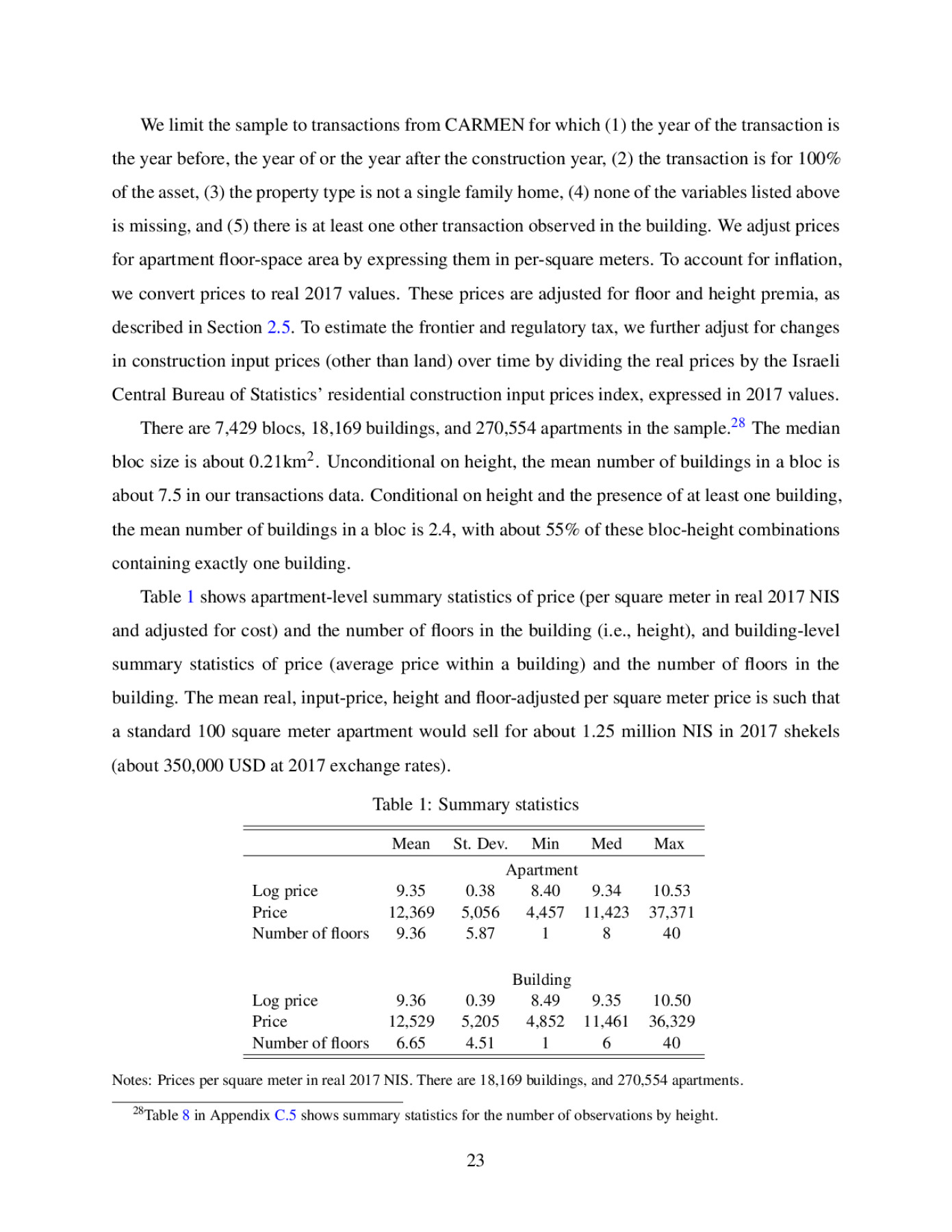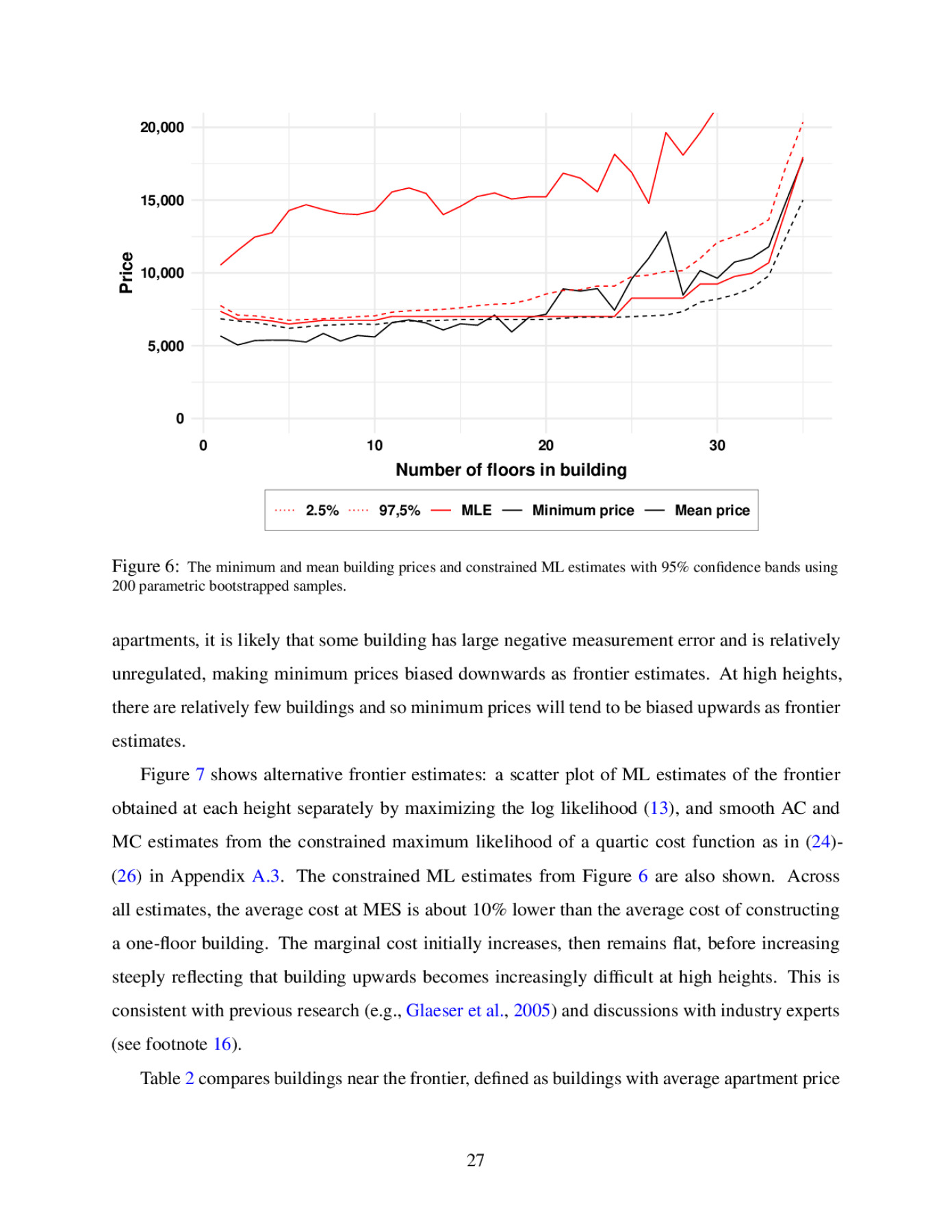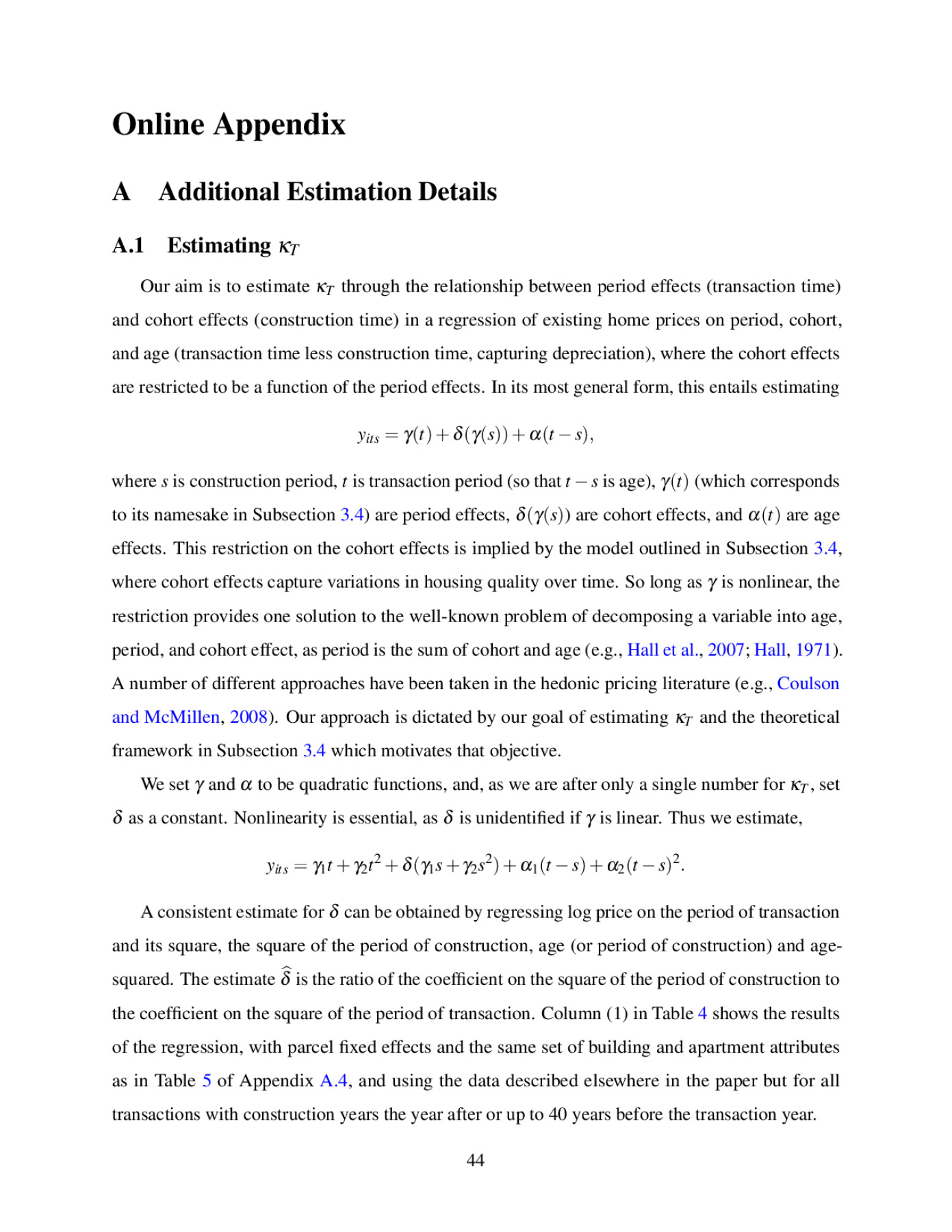2024 European Summer Meeting, Rotterdam: August, 2024
Regulation and Frontier Housing Supply
Dan Ben-Moshe, David Genesove
Regulation is a major driver of housing supply, yet often difficult to observe directly. This paper estimates frontier cost, the non-land cost of producing housing absent regulation, and regulatory tax, which quantifies regulation in money terms. Working within an urban environment of multi-floor, multi-family housing and using only apartment prices and building heights, we show that the frontier is identified from the support of supply and demand shocks without recourse to instrumental variables. In an application to new Israeli residential construction, and accounting for random housing quality, the estimated mean regulatory tax is 48% of housing prices, with significant variation across locations. Higher regulation is associated with proximity to city center, higher density, and higher prices. We construct a lower bound for the regulatory tax that allows quality to differ systematically over location and time, by assuming (weak) complementarity between quality and demand. The bound is most useful after prices have increased, so that at the end of our sample period, with prices at their highest, we bound the regulatory tax between 40% (using a 2km radius) and 53%.
Versions available:
Preview


























































